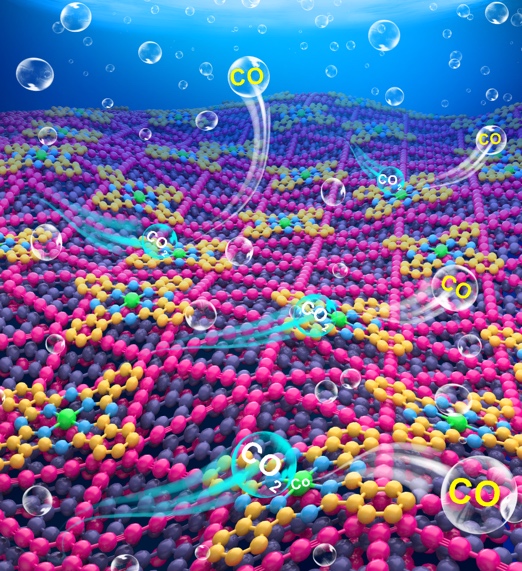Electrochemical CO2 reduction (CO2R) is a sustainable way of producing carbon-neutral fuels, yet the efficiency is limited by its sluggish kinetics and complex reaction pathways. Developing active, selective, and stable CO2R electrocatalysts is challenging and entails intelligent material structure design and tailoring. Here we show a graphdiyne/graphene (GDY/G) heterostructure as a 2D conductive scaffold to anchor monodispersed cobalt phthalocyanine (CoPc) and reduce CO2 with an appreciable activity, selectivity, and durability. Advanced characterizations, e.g., synchrotron-based X-ray absorption spectroscopy (XAS), and density functional theory (DFT) calculation disclose that the strong electronic coupling between GDY and CoPc, together with the high surface area, abundant reactive centers, and electron conductivity provided by graphene, synergistically contribute to this distinguished electrocatalytic performance. Electrochemical measurements revealed a high FECO of 96% at a partial current density of 12 mA cm–2 in a H-cell and an FECO of 97% at 100 mA cm–2 in a liquid flow cell, along with a durability over 24 h. The per-site turnover frequency of CoPc reaches 37 s–1 at −1.0 V vs RHE, outperforming most of the reported phthalocyanine- and porphyrin-based electrocatalysts. The usage of the GDY/G heterostructure as a scaffold can be further extended to other organometallic complexes beyond CoPc. Our findings lend credence to the prospect of the GDY/G hybrid contributing to the design of single-molecule dispersed CO2R catalysts for sustainable energy conversion.

https://pubs.acs.org/doi/10.1021/jacs.1c02326.
